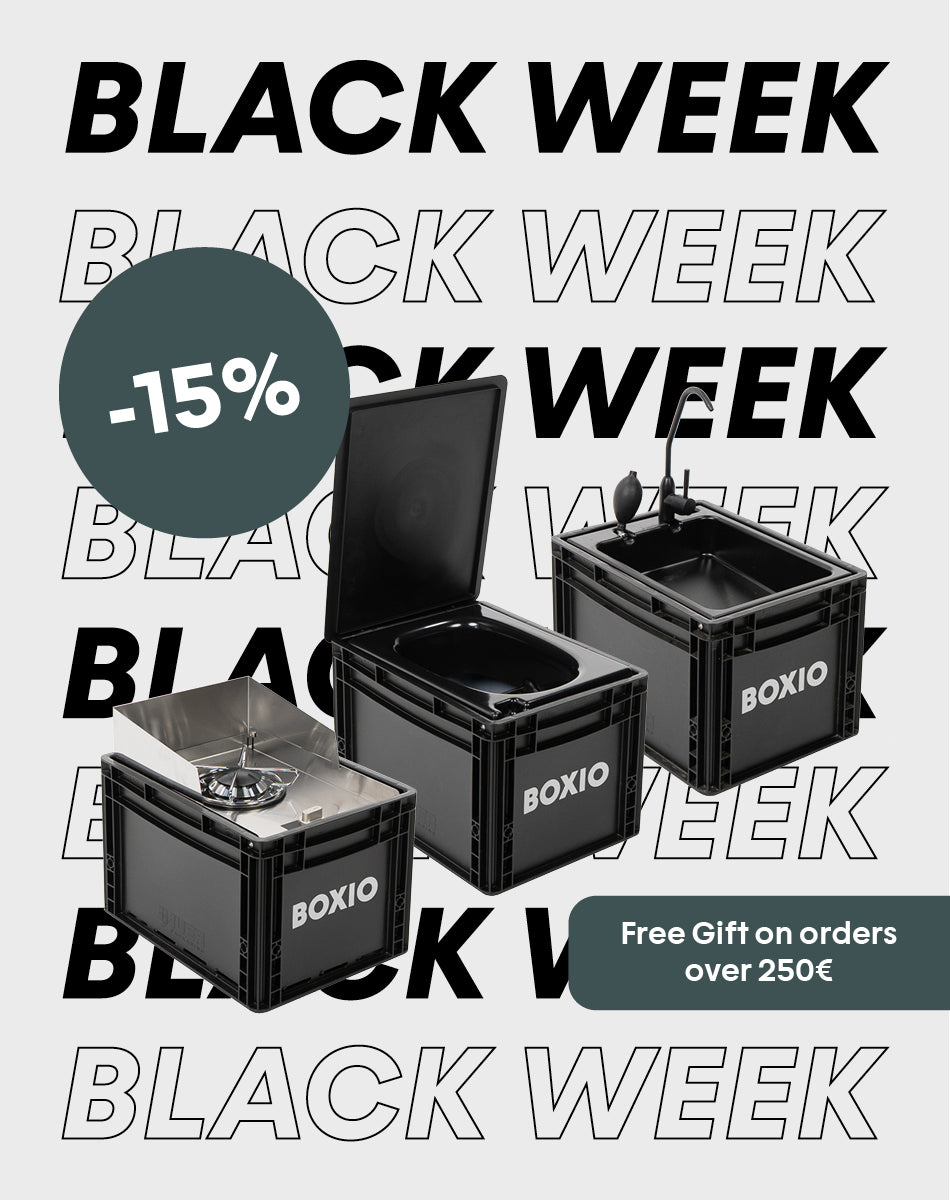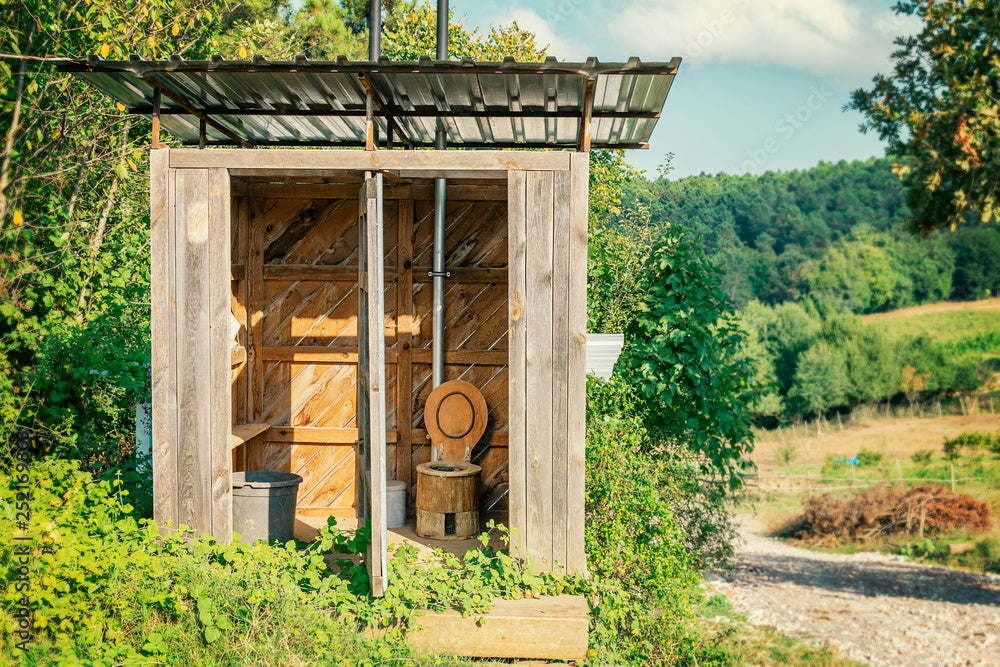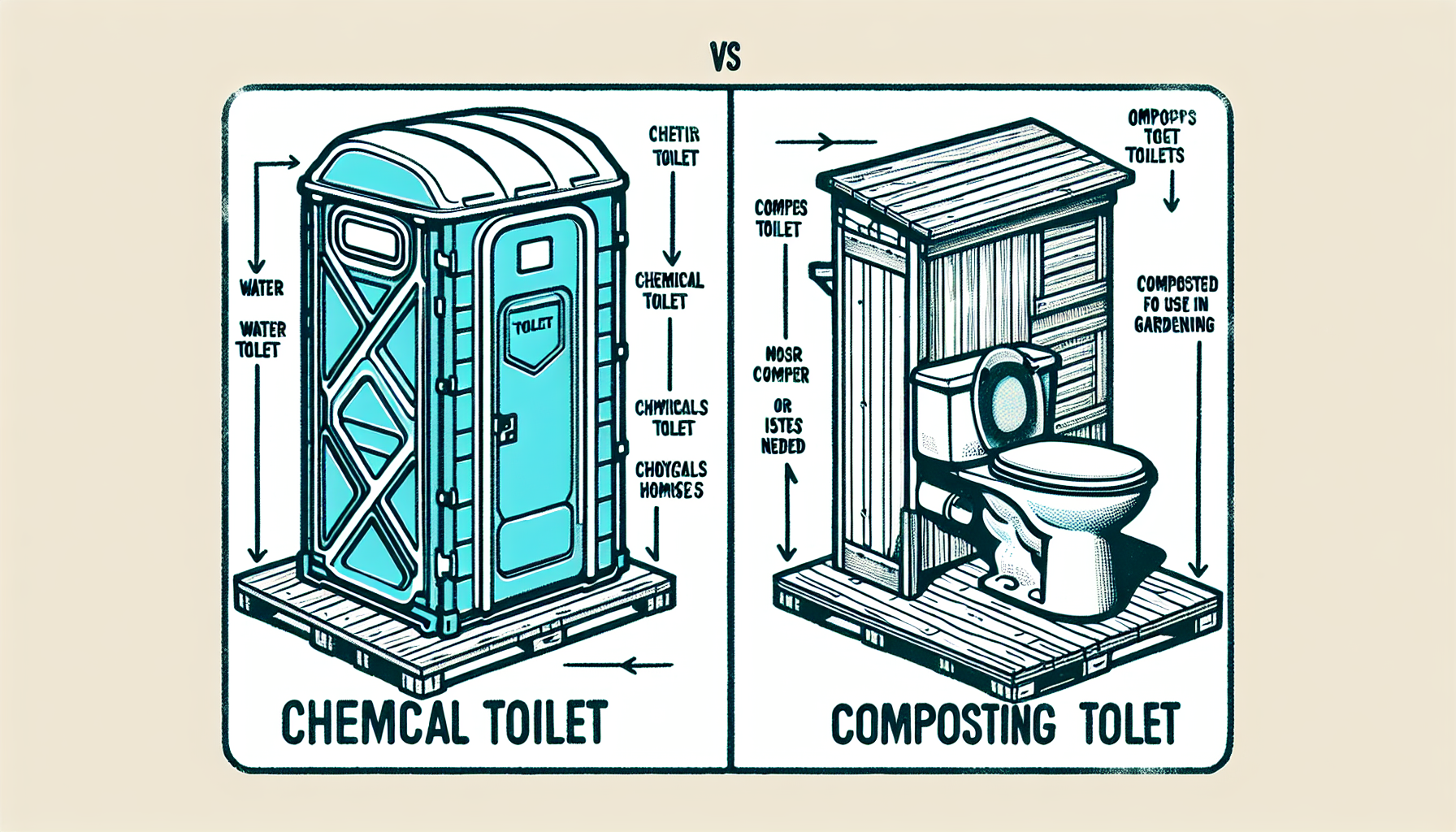
How a separating toilet works is explained in detail
Discover the freedom of the road, explore distant places and leave everyday life behind - that's vanlife. Whether alone with an exciting book in the sunset or as an adventurous couple traveling around the world in their own converted van - the vanlife movement is constantly growing. But despite all the romance, the practical question arises: how do you carry out the necessary business on the go? Van conversions can be expensive, so a cost-effective yet effective solution is needed. This is where the dry toilet comes into play – a clever companion for all vanlife enthusiasts. In this guide we explain how the popular “camper toilet” works !
What is a dry toilet?
A dry toilet (also called a separation toilet or composting toilet) is a non-flush toilet in which the solids are collected in a designated container and separated from the urine. In places that are not connected to the sewer system, the separation toilet is a low-odor, economical and ecological alternative to the chemical toilet. The feces can then be used biologically as fertilizer. Among other things, this saves water and reduces the burden on sewage treatment plants and landfills. This way you can make a personal contribution to environmental protection and have a good feeling afterwards.

Tip: Which portable toilet is best for your use? Read more here: “ Camper toilet: Using the toilet when traveling in a motorhome ”.
How is a separation toilet constructed?
The classic dry toilet consists of three components : the separating insert, the Solid container and the urine canister . Other accessories include compostable bags and grit for the solids so that you are well prepared for the upcoming van journey. The structure of a separating toilet with its individual parts is shown below:

(1) Separator insert
What is the function of the separator insert? It is used to separate the solids from the urine . We tested seven different prototypes until we and the numerous test subjects were satisfied with the results. To clean it, you can remove the separator insert from the box and rinse it. We recommend an ecologically degradable cleaning agent for cleaning.
(2) Solids container
The resulting solids are collected in the solids container . During use there is a bag that must be disposed of and replaced depending on how frequently it is used. You can also add hemp litter to the excretions, which prevents unpleasant odors and binds moisture. The litter is absorbent and by mixing the feces and litter, the excretory products can be composted better.
You should also clean the solids container regularly to maintain hygiene. We also recommend ecologically degradable cleaning agents for cleaning. The solids can then be composted. Make sure composting is complete before spreading the soil onto a bed.
(3) Urine canister
The last important component of the dry toilet is the urine canister. As the name suggests, the urine is collected here separately from the solids . A dry toilet is not designed to store urine in the canister for a long time. You should therefore empty it every two to three days to prevent unpleasant odors from forming.
Tip: You can use the urine diluted 1:10 with water for watering in the garden!
Now it is important to know how the separating toilet actually works and what you need to pay particular attention to when using it.
Dry toilet: How it works in detail

Models like the BOXIO toilet work without water, without chemicals, simply and environmentally friendly. Let's see how to use them step by step!
1. Purchase
You can purchase the BOXIO toilet online. It comes in a package that contains all the necessary components.
2. Structure
The BOXIO toilet consists of three main components: the separation insert, the solids container and the urine canister.
Tip: In this video we show exactly where and how to use the included screws.
3. Usage
First, fold up the separating insert and cover the solids container with a tear-resistant, compostable bag . Then add a handful of hemp bedding. Don't forget to screw on the lid of the urine canister - and you're ready to go! The liquid and solid excretions are separated by the separating insert and collected in separate containers. This reduces the formation of odors and enables targeted recycling or disposal.
4. Disposal of business
The solid waste falls into the solids container and can be disposed of using compostable bags and grit for the solids. The urine is directed into the canister.
Attention: When disposing of solids and urine, ensure that this is done in the designated places. Please ensure that the spaces are not contaminated. In the past, this has led to increased anger among residents and to prohibition signs from the authorities.
5. Cleaning the toilet
After disposing of the waste, you should clean the toilet. It is very important to clean all individual parts thoroughly to avoid odors and to ensure good hygiene.
Tip: Use this BOXIO Clean ! This is an ecological cleaning concentrate and can be used in a variety of ways as an all-purpose, bathroom and toilet cleaner.

BOXIO – TOILET: THE DRY TOILET
- Made in Germany
- Fair price-performance ratio
- Space-saving solution
- Box and separating insert made from regenerated material
- Durable and stable box in Euro format (40x30)
- Smooth surfaces and washable plastic
- Comfortable separation insert
What problems can women have with the separate toilet?
Dry toilets are not luxury toilets, that is clear. So could it be that (especially) women could have problems using separate toilets?

Yes, there may be some difficulties at first, especially if you have never used a dry toilet before. Even if you have your period, going to the portable toilet for it takes some getting used to. But these initial difficulties can be easily overcome!
- Aim: It takes some practice to get the urine to land exactly in the canister and the solids to land in the container behind it. If something goes wrong despite all your efforts, that's not a bad thing.
- Menstrual cup: You can easily use your menstrual cup on the go. It is best to empty them into the solid waste container of your separation toilet.
- Tampons and pads: You can also throw disposable products such as tampons or pads directly into the back container of the toilet or into a separate waste container.
So you can use the separation toilet as usual during your menstruation. It even offers you some benefits, such as a private and stress-free space to take care of your period without having to use a public toilet.
[product_metaobject_2]
Tip: A dry toilet is often a blessing for children, too. More about this in our article: “ Toilet for the car: This way no mishaps happen on the go!” “
Can the dry toilet also be used if you have diarrhea?
Let's come to a topic that is anything but pleasant, but also important: Separating toilet + diarrhea: Does it work?
You can also use your dry toilet if you have diarrhea. However, you should then take some additional measures.
- Add more litter: If you have diarrhea, you can simply add more litter to the solids container. The additional litter helps absorb the liquid.
- Change the bag more often: If you have diarrhea, you should change the bag in the solids container more often. This helps to ensure the necessary hygiene and minimize odors.
-
Use a separate solids container: If the diarrhea is due to illness, you should use a separate solids container. This helps prevent the spread of pathogens.
Dry toilet: conclusion
After taking a closer look at how a dry toilet works, it can be said: This alternative toilet solution without flushing - especially in the context of van life - offers many advantages.
- It collects solids and urine efficiently in separate containers, does not require a water connection, can be set up anywhere and is therefore odor-free, economical and environmentally friendly.
- Using it is child's play.
- The subsequent disposal of the waste is extremely easy thanks to compostable bags.
Despite occasional challenges when using during menstruation or diarrhea, dry toilets offer a versatile, sustainable and practical solution for everyday camping.
[product_metaobject_1]
Dry toilet: FAQ
How does a dry toilet work?
A dry toilet works by separating solid and liquid waste in separate containers. Solid waste is covered with litter to reduce odors and aid in the drying process, while urine is collected separately.
How do you use a dry toilet?
Here are short step-by-step instructions for use: 1️⃣ Just sit on it and off you go like a normal toilet. 2️⃣ Dispose of the toilet paper in the solids container or separately. 3️⃣ Sprinkle solid residue with the odor-binding hemp litter.
What to do with urine from a dry toilet?
Urine from a dry toilet is usually drained into a canister. This canister is located directly under the opening of the BOXIO toilet. As soon as the urine canister is full, it can be emptied in a public toilet, for example.
Where to put the toilet paper in a separating toilet?
The toilet paper can be thrown into the solids container. Any normal toilet paper can be used for the separating toilet. At the end, cover the solid excretions with some litter. The garbage bag and its contents can be easily and safely disposed of in the trash.
How does a dry toilet work at the campsite?
A dry toilet at the campsite also works without water. This system conserves resources and is particularly suitable for places with limited water access or in nature reserves.
How does a dry toilet work in a motorhome?
An RV dry toilet works like this: It separates solid and liquid waste in separate containers, using litter to control odor and dry the feces.




